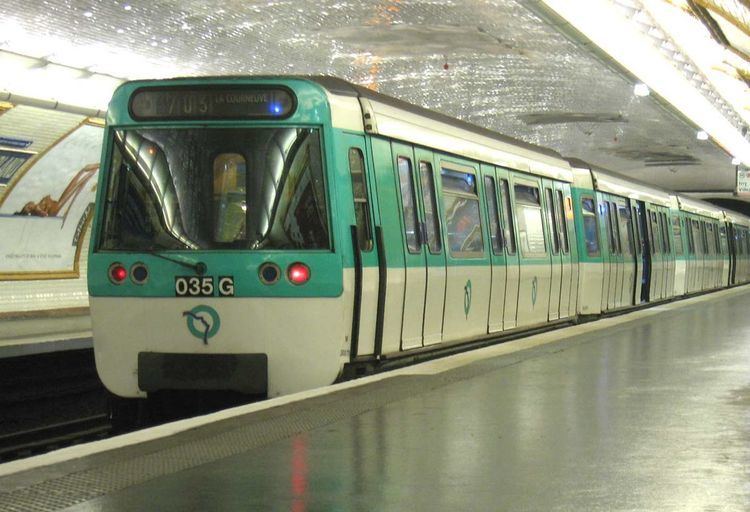In service 1978 - Current Number built 985 cars Capacity 574 per train set | Refurbishment 2007 Formation 5 per trainset | |
 | ||
Manufacturer | ||
The MF 77 (abbreviated from the French: Metro Fer appel d'offre 1977) is a steel-wheeled variant of the rolling stock used on the Paris Métro. First used in 1978, it now runs on Lines 7, 8, and 13.
Contents
Unlike previous models, the MF 77 was designed for travel into the immediate suburbs of Paris, and as a result has a maximum speed of 100 km/h (62 mph) which has yet to be fully utilised. In addition, it sports a new, curved silhouette with a wider midsection. Its original exterior colours, blue and white, led passengers to refer to it as "le métro blanc," or white metro.
Replacing the Sprague
In the early 1970s, upon the completion of the MF 67 delivery, at the time the newest steel-wheeled trains on the Métro, many technological advances in braking and traction caused the RATP, which oversees operations of the Parisian public transport network, to examine the possibilities for new steel, rather than rubber, wheeled trains to replace the ageing Sprague-Thomson fleet. Thus, the RATP commissioned a consortium of companies including Alstom, CEM, Creusot-Loire, and Jeumont Schneider, to design a new addition to the Métro's rolling stock, the MF 77.
The RATP's goal at the time of commission was for 1,000 cars, 600 of which to contain engines for 200 five-car sets. Later, the order was reduced to 187 sets for a total for 935 cars. The first trains were delivered in the summer of 1978, the first being run on 26 September of that year on Line 13, whose MF 67 trains were transferred to Line 8. A second order of ten sets was contracted on 4 February 1983, released in 1985 and 1986.
The trains on Line 13 recently underwent their mid-life refurbishment, which included a new interior configuration, updated destination signage, lighting and mechanical improvements. However, the RATP was largely dissatisfied with the refurbishment of the Line 13 trains, citing problems with the contractor that handled the work, as well as defects in the workmanship. Though it is expected that the trains on Line 8 will be refurbished next, followed by the trains on Line 7, the RATP will explore other avenues to carry out the work, even if it means that the refurbishment is done on a lesser scale (similar to that of the refurbishment of the MF 67 on Lines 10 and 12).
